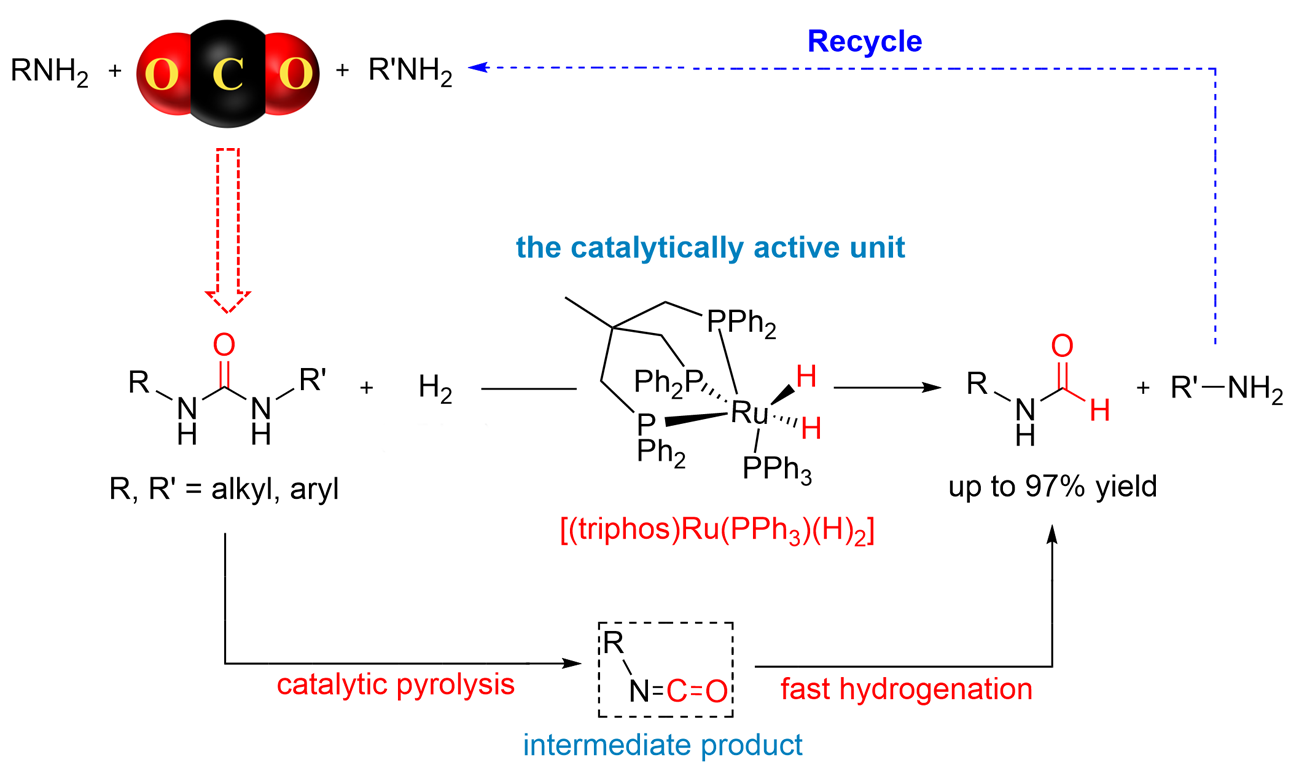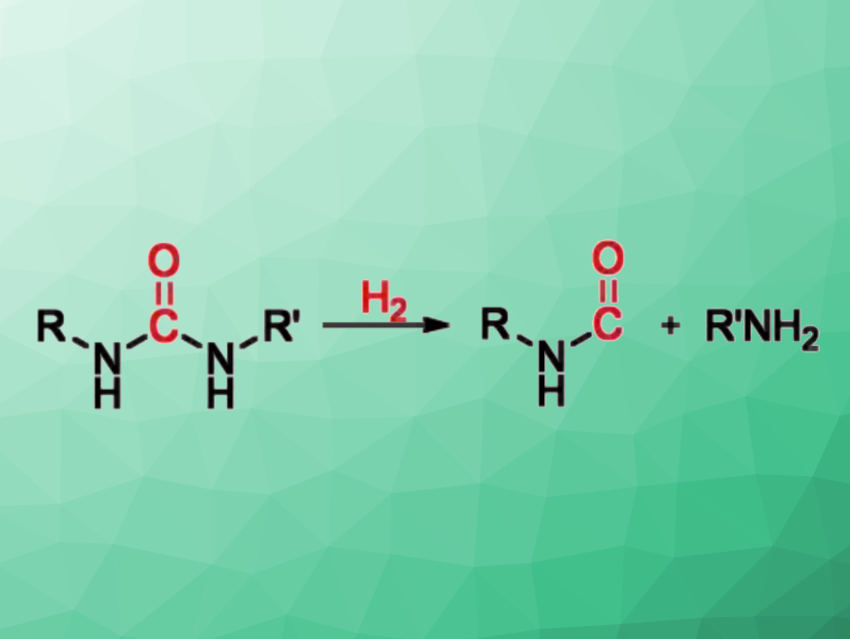Formamides are widely used in industry as solvents and raw materials for synthesis. The use of CO2 as a C1 building block has been industrialized mainly in the production of urea. Therefore, the development of efficient methods to convert urea derivatives to formamides can be useful for CO2 utilization. However, urea derivatives can be difficult to hydrogenate. In addition, the hydrogenation of formamides is generally easier than that of the urea derivatives, which makes it difficult to avoid over-hydrogenation.
Haoran Li, Zhejiang University, Hangzhou, China, and colleagues have developed a ruthenium-catalyzed semi-hydrogenation of urea derivatives that can be used to prepare formamides with high selectivity. The team used (PPh3)3RuCl2 as a catalyst precursor, 1,1,1-tris(diphenylphosphinomethyl)ethane as a ligand, KOtBu as an additive, and tetrahydrofuran (THF) as the solvent. The reactions were performed at 140 °C under 50 bar H2.

Under these conditions, various alkyl and aryl urea derivatives were successfully hydrogenated to obtain the corresponding recyclable amines and the desired formamides (up to 97 % yield). A Ru(II) dihydride complex (pictured above) was confirmed to be the catalytically active species. The team discovered that even at much lower H2 pressures (< 5 bar), the conversion efficiency was not affected, but the selectivity was reduced. Since the employed alkyl and aryl urea derivatives are easily obtained by a reaction of CO2 and amines, their hydrogenation provides an environmentally friendly pathway for the indirect conversion of CO2 to formamides.
- Highly Efficient Ruthenium‐Catalyzed Semihydrogenation of Urea Derivatives to Formamides,
Jun Zhu, Yue Zhang, Zeyu Wen, Qiyi Ma, Yongtao Wang, Jia Yao, Haoran Li,
Chem. Eur. J. 2023.
https://doi.org/10.1002/chem.202300106




